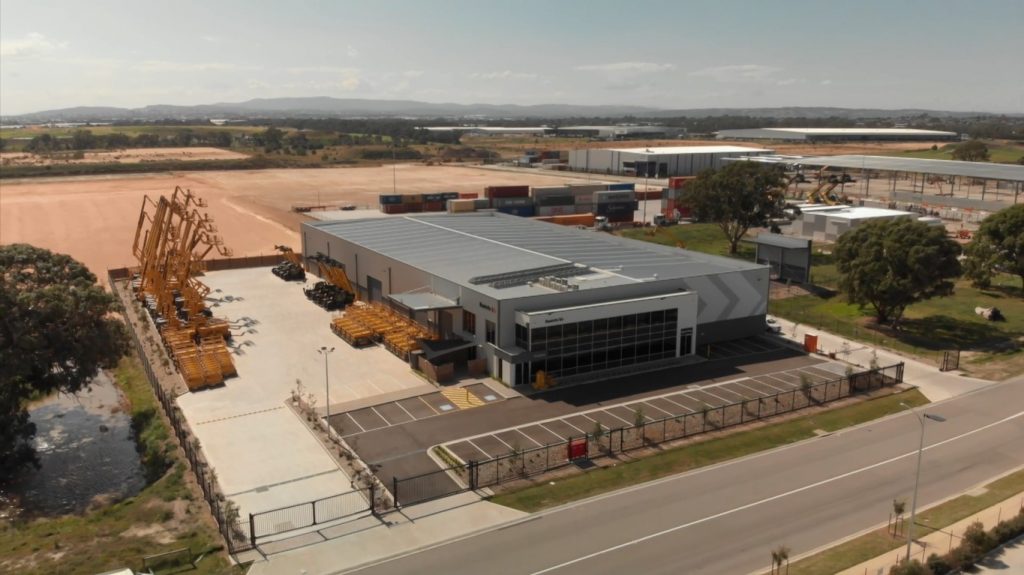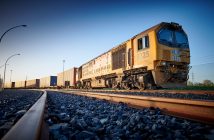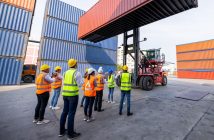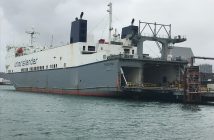Investment in direct rail freight between the Port of Melbourne and Dandenong South will make rail freight cheaper for businesses and take trucks off suburban roads

Salta Properties and the Victorian Government have signed an agreement to jointly fund the
Dandenong South Intermodal Terminal.
The Federal Government and the Victorian Government will jointly invest $28 million on government owned land to connect rail to Salta’s site boundary as part of its objective to retain Victoria’s status as the number one destination for containerised freight in Australia.
Salta will concurrently invest more than $50 million to construct the Dandenong South Intermodal Terminal to be located on Salta’s 180-hectare Nexus Dandenong South Intermodal Estate.
Salta’s additional investment is on top of having already spent in excess of $200 million for land, road, and other infrastructure works, in anticipation of the Intermodal Terminal.
Nexus Dandenong South is home to major users of freight infrastructure including Woolworths’ $215 million Melbourne South Regional Distribution Centre, Bunnings’ 40,000m2 Regional Distribution Centre, plus major logistics businesses, Visa Global Logistics and Silk Contract Logistics. Significant capacity exists for additional tenants to co locate at the estate. They will benefit strategically from being adjacent to the Dandenong South Intermodal Terminal. Salta anticipates the value of new development on the estate to exceed $1 billion over the next three to five years.
Work will start early in 2021 on what will become Melbourne’s biggest Intermodal Terminal, enabling the efficient movement of thousands more containers through the Port of Melbourne (POM).
The first phase of the project is expected to take just 24 months from works commencement and will include the laying of 800m of rail track and the development of a working apron providing the terminal a capacity to deliver an initial annual throughput of 100,000 TEU.
Salta Founding Director Sam Tarascio Snr says he is delighted to reach an agreement with the Victorian Government after investing millions developing the Nexus Dandenong South Intermodal Estate.
“We have been working extensively with the State Government to get to this point and it is satisfying to know that the facility will be connected directly with the Port of Melbourne,” Tarascio says.
“This has been a long-term project, where we set out to work with industry and government to provide the best possible inland port infrastructure to Melbourne’s south east, providing an efficient route to market for both importers and exporters.
“Over the past 15 years, Salta has developed plans to increase freight capacity in the outer Melbourne area. Operations at POM are limited by the availability and capacity of trucks to transport freight via road causing serious congestion in and around the POM.
“Salta’s new rail freight terminal will provide opportunities for operators to switch freight transport from road to rail. This will ease congestion, reduce costs, and provide greater opportunities for imports and exports in the South-east of Melbourne,” he says.
City of Greater Dandenong Mayor, Cr. Jim Memeti, says his Council was elated to see this project come to fruition.
“We are incredibly excited to be working closely with Salta and the State Government to deliver this much needed infrastructure project within our city, Memeti says.
“Not only will this benefit local business and industry, but will also provide new employment opportunities for residents across the south east region. The many benefits of this project will be recognised for years to come and will provide a welcome boost to our business economy.”
Also welcoming the announcement was Vonda Fenwick, CEO of South East Melbourne Manufacturers’ Alliance who said the Inland Port offered a cost-effective alternative to road transport.
“It will also benefit the South East by reducing traffic congestion and taking container transport vehicles off the Monash Freeway and arterial roads,” Fenwick says.
“The construction of the rail tracks and container terminal will generate employment in the area with a positive economic flow-on to the broader Dandenong community.”
The terminal will eventually have expansive storage facilities for both empty and full containers consisting of 110,000 square metres of hard stand, with the ability for two additional rail spurs within the terminal to service increased demand.
Benefits
For the South East Region:
- Cementing the South East Region as a key region for significant import / export businesses to locate.
- Reduced supply-chain costs for importers and exporters in the region, with rail providing a cheaper and more reliable alternative to road freight.
- Earlier access to import containers, resulting in reduced costs to importers and a greater ability for importers to meet the demands of industry in the south-east.
- A more reliable export supply chain, which will reduce whole of transport costs, reduce the incidence of exports missing vessel cut-off times and improve supply chain efficiency.
For Tenants at the Estate:
- Priority access to the Intermodal Terminal.
- Elimination of one transport leg, delivering significant savings.
- Reduced reliance and demand on the Monash Freeway, which is at capacity and very vulnerable to long disruptions.
For the Community Generally:
- An initial reduction of in excess of 150 truck trips on the Monash Freeway per day increasing to in excess of 300 once the terminal is fully operational.
- Less truck trips means less pollution, increased road safety, and reduced wear and tear on the State’s critical road network.
- Usage of the Dandenong South Intermodal Terminal will significantly reduce the number of trucks traversing Melbourne’s freeways and arterial roads. The shift towards a more environmentally friendly mode of freight transport will lead to a reduction in carbon emissions. Rail linehaul of containers via the Dandenong South Intermodal Terminal will lead to a 63% reduction in fuel consumption and
a 66% quantity reduction in carbon dioxide equivalent tonnes emitted for the
containers concerned.
Jobs:
- 1,000 direct construction jobs and 1,800 indirect construction jobs.
- 1,600 on-going direct jobs and 4,500 on-going indirect jobs operating and
supporting the terminal
Read Port of Melbourne’s Plan for Rail 2020




